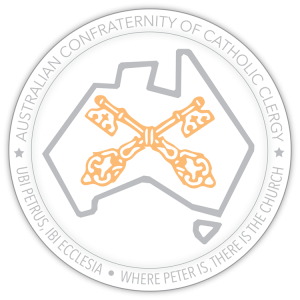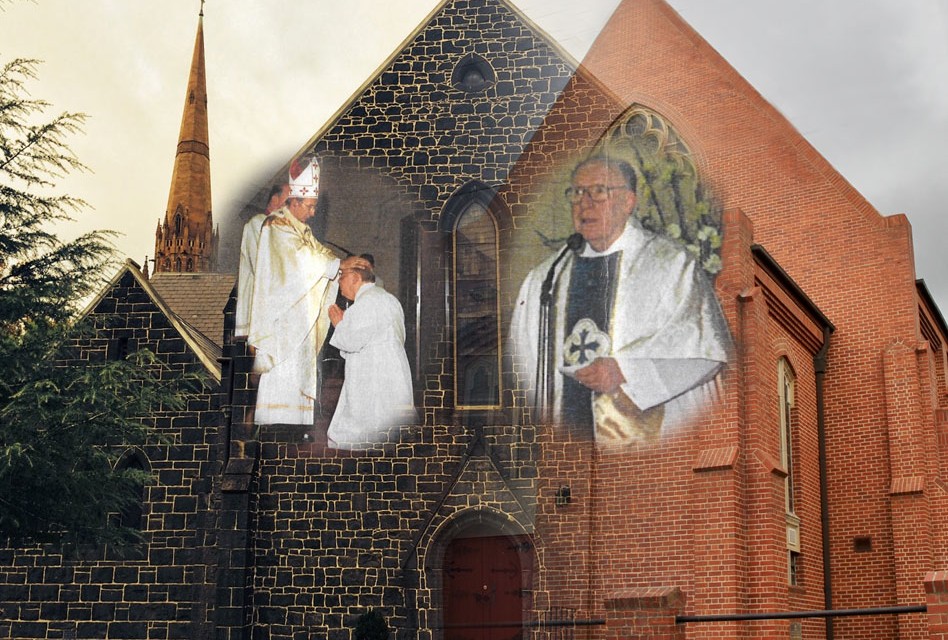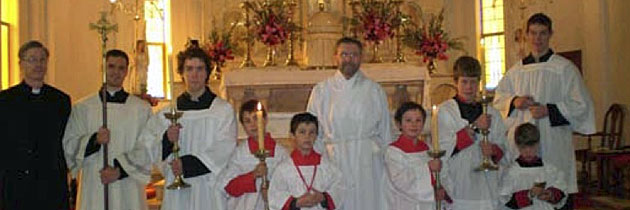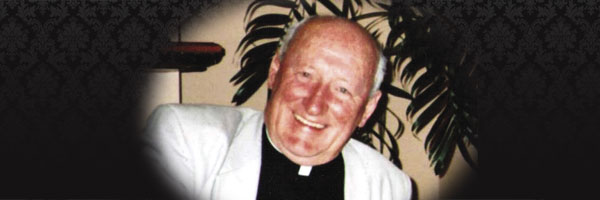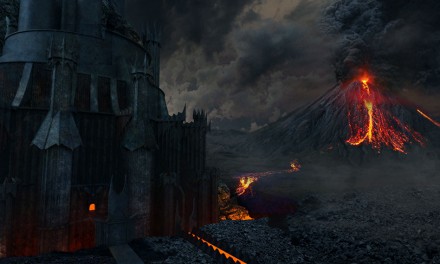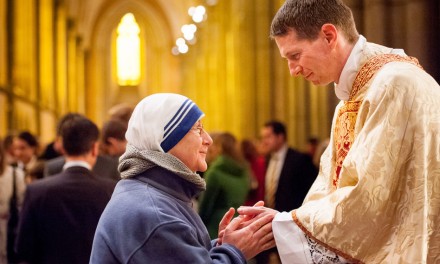Father Geoffrey James Taylor was “a single-minded servant of the Divine Master and Eucharistic Lord to whom so many, Anglican and Catholic, owe a huge debt of gratitude.” This tribute was offered some years ago by the Most Reverend Geoffrey Jarrett, Bishop of Lismore, who knew Fr Taylor from his teenage years in the 1950s.
Print Friendly Format
Download and view this article as it appeared in the Summer 2015 issue of The Priest.
A tribute to Fr Geoffrey Taylor PE, 1926–2015
Geoffrey Taylor was born on 1st December 1926, the second son and youngest child of Percival George Taylor and Esther Elizabeth Sandery. He had a strict Methodist upbringing, but one infused with a love of the visual arts and music. The Burne-Jones Tapestry of The Adoration of The Magi at the Feast of the Epiphany in the Adelaide Art Gallery had an early impact on him, as did visits with his mother to piano recitals in the Elder Hall. He suffered from infantile paralysis as a young child, and an undercurrent of health concerns would continue throughout his life, despite his look of robust vigour.
A stay with his sister and brother-in-law at a remote township on the Murray River, gave Geoffrey his first insight into beautiful liturgy when he attended the local Lutheran church. This led, as he moved through his teens, to a mixing of Methodist Prayer Services with Evensong at St Cuthbert’s Church of England church in Prospect.
By the age of sixteen Geoffrey was leading services for children of Prospect Methodist Church and seemed destined for a life in Methodist ministry, despite a niggling attraction to Anglican sacramental life. In early 1946 he was received as a Candidate for Methodist ministry and took up residence at Wesley Theological College in Adelaide, playing the organ in the College Chapel. In 1949 he was appointed to his first probationary year as a Methodist minister. Here Geoffrey displayed his tendency to high liturgy. The disquiet this provoked in Methodist circles led to Geoffrey’s placement on a punitive posting to the remote settlement of Penong — located, perhaps appropriately, at the edge of the Nullarbor Plain between Denial Bay and Cape Adieu! This brought to a head the crisis in Geoffrey’s vocational life which had been long brewing, and he resigned as a Candidate for ordination in the Methodist Church, being received into the Church of England by Adelaide Bishop Bryan Robin on 5th April 1950.
Within weeks, Geoffrey was sent to study for Anglican Orders at Trinity College, Melbourne, lodging with Melbourne’s most famous Anglo-Catholic Divine, Canon Farnham E. Maynard, Vicar of St Peter’s, Eastern Hill. Geoffrey James Taylor, child of Evangelical Adelaide, found himself thrust into the very epicenter of Australian Anglo-Catholicism.
Geoffrey completed his studies with a License in Theology and was ordained a deacon by Melbourne Archbishop Joseph Booth in St Paul’s Cathedral on 18th February, 1951. He was appointed as curate to All Saints, East St Kilda, a leading High Anglican Church, serving under Archdeacon Douglas Blake, “a delightful and able man.” Here Geoffrey connected to Anglican nuns of the Community of the Sisters of the Church, one of the fruits of the English Tracterian Movement with which Geoffrey was now becoming familiar.
On 9th March 1952, Geoffrey was ordained a priest in Anglican Orders, and he offered his first Mass at All Saints, East St Kilda the following day. In late 1952 Geoffrey was appointed Vicar of St George the Martyr, West Footscray, thrust into the vibrant and turbulent life of working class Melbourne at the height of the struggle between Communist-dominated unions and the Movement, led by Bob Santamaria. Geoffrey loved his time in West Footscray and was deeply loved in turn by his parishioners. It was in this time that Geoffrey Taylor and Geoffrey Jarrett, then a schoolboy, first met through the Altar Servers’ Guild. In this period Geoffrey became an Oblate of St Benedict connected to the Anglican Benedictine Abbey at Nashdom in Buckinghamshire. He never lost his commitment to Benedictine spirituality and prayer life. It was also at this time that he discovered the life of St John Vianney.
By early 1958 Geoffrey felt the need to explore a Benedictine vocation, sailing for Europe on the S.S. Stratheden. He disembarked at Marseilles, spending time with the peripatetic Little Sisters of Charles De Foucauld, visiting the Shrine of the Cure D’Ars and sharing accommodation with the worker priests of the Lay Brothers of Charles De Foucauld in Paris. He arrived at Nashdom Abbey in the depths of an English winter. Geoffrey found Nashdom “a remarkable place in which to meet remarkable people,” helping to edit proofs of the Oxford Dictionary of the Christian Church, but he concluded that monastic life was not his calling. He then took up the post of Resident Chaplain with the Community of the Sisters of the Church at their headquarters in Ham Common, reconnecting while there with Geoffrey Jarrett, then studying in England, and also forging a connection with the Most Reverend Michael Ramsey, then Archbishop of York, but from 1961 Archbishop of Canterbury. In this period Geoffrey immersed himself in Anglo-Catholicism, then in its confident heyday, marked by a Eucharistic Congress in Royal Albert Hall in July 1958. Geoffrey was appointed a locum chaplain in the Royal Chaplaincy, serving at Hampton Court Palace. One of his parishioners was the Countess Gowrie, widow of an Australian Governor-General.
Geoffrey returned to Australian in May 1959, having drunk deeply at the well of a vital and confident Anglo-Catholic Church, not in the least aware that its days were now numbered as a truly vital presence. On 1st July 1959 Geoffrey became curate to Canon Maynard at Eastern Hill, and was appointed Vicar of that parish in June of 1964. In his inaugural letter to parishioners, Geoffrey announced his devotion to the Catholic Church and his deep desire to bring the Mass into the daily lives of his people. In his ministry Geoffrey displayed deep humility, profound pastoral commitment, down-to-earth friendliness, a commitment to Christian unity and a deep-seated devotion to Our Lord Jesus Christ and to Our Lady. His devotion to his flock was matched by his parishioners’ devotion to him.
Geoffrey would subsequently serve as Anglican Vicar at St John’s, Albany, and at Christ Church, Essendon. He was elected Provincial Vicar of the Anglo-Catholic Society of the Holy Cross (SSC); in 1986 and in 1988 he was appointed an Honorary Canon of Christ Church Cathedral, Ballarat. On 7th March 1993, following consultations in England with Bishop Graham Leonard, Episcopal Visitor of the SSC, Geoffrey sadly but firmly resigned his Anglican Orders, in the face of the evident determination of the Anglican Church to ordain women to the priesthood. He began attending Mass at St Monica’s Church near his home at Moonee Ponds, being received into the Catholic Church by Bishop Gerorge Pell on 10th April 1993 at St Patrick’s Church, Mentone.
With great dignity Geoffrey entered the Catholic Church as a layman, coming to attend daily Mass at St Joseph’s, West Brunswick, where Fr Denis Hart was then parish priest. With the active encouragement of the Anglican Archbishop of Melbourne, Catholic Archbishop Frank Little determined that Mr Geoffrey James Taylor should be ordained a Catholic priest. On the Feast of the Assumption, 15th August 1995, Geoffrey Taylor was ordained by Archbishop Little as a priest of the Catholic Church, with Bishop Pell and Fr Hart concelebrating. Fr Taylor became an honorary member of the clergy team at West Brunswick parish, performing chaplaincy duties at Mount Royal Hospital, Parkville, and teaching duties at Corpus Christi College when it moved to Carlton.
In 2000 Archbishop Pell conferred the title of Pastor Emeritus on Fr Taylor and he retired from his day to day involvement in the parish and the seminary. He remained very active in priestly ministry, generous with his time, his prayers, his Christian counsel, always delivered with a cheery avuncularity. “Remarkable”, he delighted to say; and so he was, just “remarkable.”
In failing health, but good spirits, in 2002 Geoffrey retired to Justin Villa, North Balwyn, where he was very happy in the care of the Sister Disciples of the Divine Master. He continued to receive a steady stream of former parishioners, both Anglican and Catholic.
Geoffrey spent the twilight years of his life in St Catherine’s House, next to Justin Villa. He is remembered with the deepest love and respect by the many people whose souls he touched and guided, among them numerous bishops and priests. He died on 26th July 2015 and Archbishop Hart presided at his Requiem Mass at St Joseph’s, West Brunswick, on the 30th July 2015. In the words of Bishop Jarrett: “We thank God for Geoffrey’s faithful ministry. It used to be only for bishops that the choir sang ‘Ecce, Sacerdos Magnus,’ but for Geoffrey Taylor let it be our chorus: ‘Behold, a Great Priest!’”
